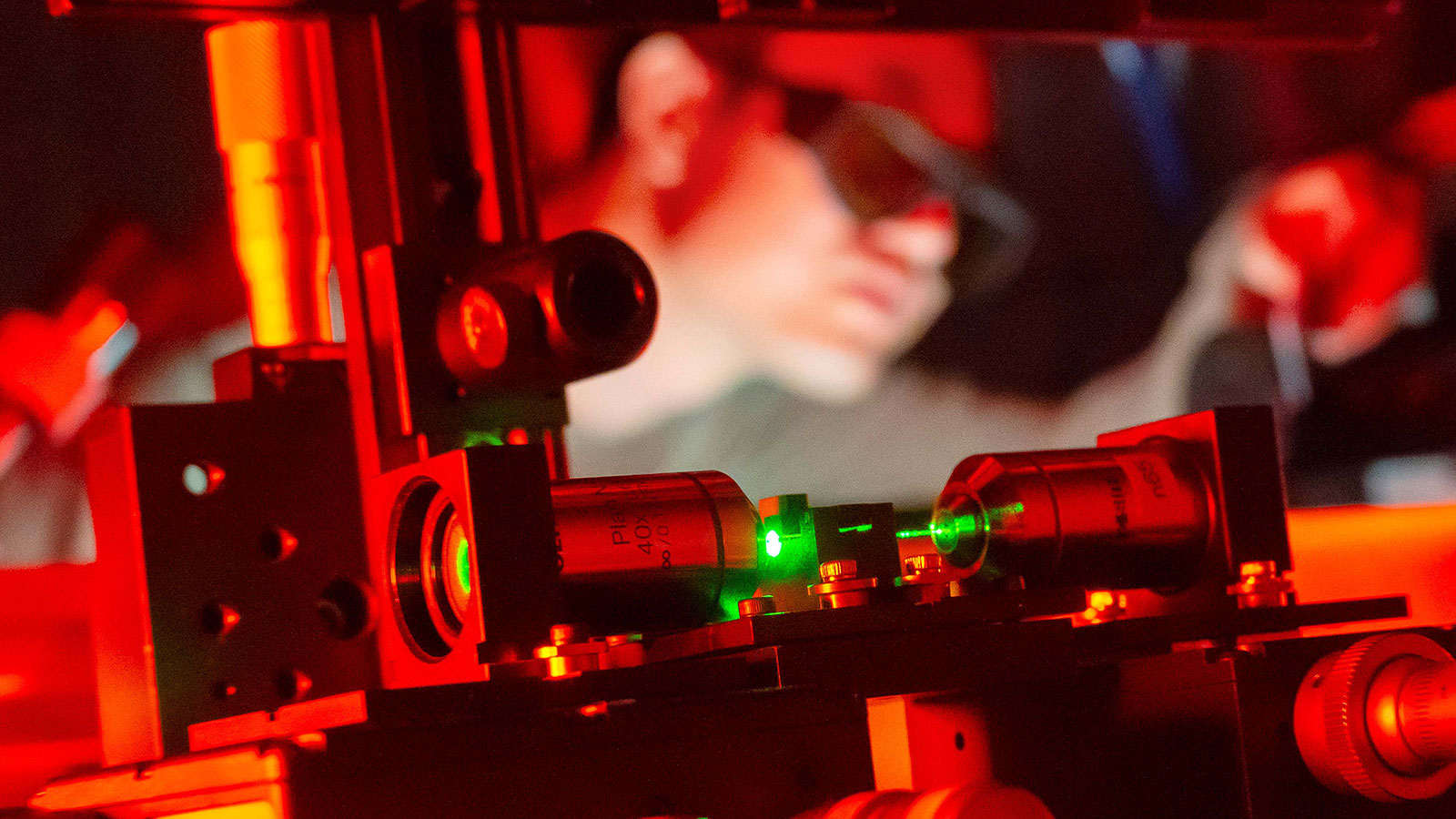Functionalized fibers allow light to be given a different color – Physics team develops optical fibers that can do more than just guide light

Red does not become green and infrared light does not suddenly become visible. Because light does not change its wavelength just like that. An international research team has succeeded for the first time in functionalizing optical fibers in such a way that they transform invisible infrared light into red light using 2D materials. These special fibers, developed in the Collaborative Research Center NOA (Nonlinear Optics down to Atomic scales) at Friedrich Schiller University Jena together with partners at Fraunhofer IOF, Leibniz IPHT and the universities in Sydney and Adelaide, Australia, could be used as miniature light converters in the future. The scientists published their research results in the renowned journal Nature Photonics.
Computers, smartphones, and supercomputing centers are becoming more and more powerful. Unimaginable amounts of data are being processed and transported around the world in ever shorter times. The negative effect is that the energy consumption of the chips that perform the necessary computing tasks is also growing. A large part of this energy requirement arises for the movement of information by electrons. A more energy-efficient way of transporting data than using electrons could help extend the battery life of a mobile phone.
To get closer to this goal, researchers are looking for alternatives: They are relying on photons as a medium – also for data transport – and on optical fibers made of glass. The optical fibers were specially designed and “upgraded” by the researchers to take on new functions. For this purpose, the scientists combined optical glass fibers with 2D materials, such as molybdenum disulfate, which is used as a lubricant in motor oils and consists of only one layer of atoms.
“The crystalline 2D material could be applied to the optical fiber in a sophisticated process. With the fibers functionalized in this way, we can realize optical frequency doubling, for example, so that light can halve its wavelength and change its color. For example, red light becomes blue light or infrared becomes red,” explains Prof. Dr. Markus Schmidt, head of the Fiber Photonics Department at Leibniz IPHT.
The researchers not only had to refine the fibers with 2D materials, but also shape them specially. They used fibers developed by the team led by Prof. Dr. Markus Schmidt at Leibniz IPHT and Prof. Dr. Heike Heidepriem-Ebendorff at the University of Adelaide. “The special feature of these fibers is that their fiber core region is not completely surrounded by an outer cladding region,” explains Prof. Dr. Markus Schmidt. This fiber, shaped like a hollow “C,” allows the light to be guided in the vicinity of a suspended surface rather than in the center, which significantly enhances the light-matter interaction, i.e., the reaction of the light particles with the 2D material.
This makes the researchers the first in the world to succeed in functionalizing optical fibers in such a way that they can be used in the future, for example, as nonlinear light converters using 2D materials. “In addition, applications in the field of fast light modulation and thus areas of use in laser material processing or microscopy as well as spectroscopy are imaginable,” says Prof. Dr. Markus Schmidt.
Scientific publication
Gia Quyet Ngo et al., Nature Photonics, 2022, https://doi.org/10.1038/s41566-022-01067-y
In the picture:
Research on optical fibers that can be functionalized by 2D materials.
©Jens Meyer/Universität Jena


